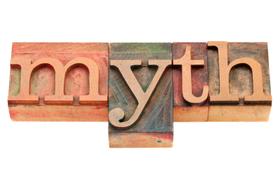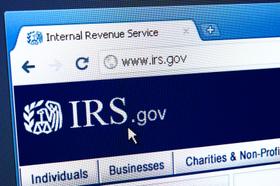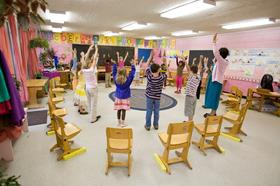A timeline is helpful when dealing with a controversial issue such as school vouchers. But before we do that, what are vouchers?
EdChoice describes vouchers as:
"School vouchers give parents the freedom to choose a private school for their children, using all or part of the public funding set aside for their children's education. Under such a program, funds typically spent by a school district would be allocated to a participating family in the form of a voucher to pay partial or full tuition for their child's private school, including both religious and non-religious options."
You will hear vouchers called various names, such as parental choice, education grants, scholarships, and tuition grants, to list but a few of the names you will encounter for vouchers. According to the Education Commission of the States, Sixteen states and the District of Columbia currently offer 27 voucher programs.
This TEDxICC talk is entitled School Choice: The Next Frontier In Civil Rights.
Introduction to School Choice
School choice is a term that encompasses various alternatives to traditional public schools, including charter schools, private schools, homeschooling, and vouchers. The concept has deep historical roots and continues to be a vital part of contemporary education policy.
Early 20th Century: Origins and Early Models
The idea of educational vouchers was first proposed by economist Milton Friedman in 1955. He suggested that allowing parents to choose schools for their children would create competition and improve education quality.
1960s-1970s: Experimentation and Development
During the 1960s and 1970s, the first voucher programs emerged in the United States. Legal challenges were common, but these years laid the groundwork for future growth.
1980s-1990s: Growth and Controversy
The 1980s and 1990s saw a significant expansion of voucher programs, with increased political support and public interest. The Milwaukee Parental Choice Program, among others, became a point of contention.
2000s: Expansion and Popularity
The 2000s marked a new era for school choice, with the introduction of tax-credit scholarship programs and the No Child Left Behind Act encouraging further expansion and debate.
The 2010s: Further Development and Technology Integration
With the rise of technology, school choice evolved to include online learning options. State-level legislation continued to evolve, and international trends mirrored U.S. developments.
Benefits of School Choice
The benefits of school choice include increased competition, tailored education to student needs, and empowerment of families to find the best fit for their children.
Criticisms and Challenges
Despite its growth, school choice faced criticisms such as equity and access concerns, effects on public school funding, and potential lack of accountability.
Recent Developments and Future Outlook
The COVID-19 pandemic has shaped school choice in new ways, spurring ongoing political and social debates. The future of school choice continues to be a dynamic and evolving field.
Conclusion
With vouchers as a key component, school choice has significantly shaped the education landscape. While there are clear benefits, the debate continues with many unanswered questions. The future promises continued innovation and growth but with continued scrutiny and evaluation.
This video discusses who opposes school choice and why.
Why are vouchers controversial?
Now that you have access to the data that will inform your thinking, let's tackle the big question: why are vouchers controversial?
According to the national teachers' associations - The National Education Association (NEA) and the American Federation of Teachers (AFT) - voucher programs in various formats siphon funds away from public schools. Secondly, the academic results, which were supposed to have been one reason for voucher programs, apparently have shown little improvement over the results achieved in public schools.
The NEA has an extensive list of research papers on vouchers. While I cannot vouch for the viewpoints or agendas behind these papers, the data is worth reviewing. As parents, you and I want good results when we send our children to any school. If a voucher program in your state or town looks like it is what you need, take the time to review the data, which is, in most cases, available either on the state's Department of Education website or the local school district's.
The dollar value of the voucher will probably not cover the total cost of tuition at the private school you wish to use the voucher for. Furthermore, only some private schools accept vouchers. So, take time to get answers to these crucial questions.
A Timeline for School Choice and Voucher Initiatives
1873 - Maine - Town Tuitioning Program
1990 - Milwaukee - Parental Choice Program
1996- Cleveland - Scholarship
2007 - Florida - Tax Credit Scholarship
Georgia - Special Needs Scholarship Program
2008 - Louisiana passed the Student Scholarships for Educational Excellence Program, providing vouchers to low-income students in underperforming schools.
2009 - The Obama administration reduced funding for the D.C. Opportunity Scholarship Program but later reinstated it due to Congressional pressure.
2011 - Wisconsin: Racine - Parental Choice Program
Indiana - School Choice Program
2012 - New Hampshire – Education Tax Credit Program
2013 - Wisconsin - Parental Choice Program
2014 - The Florida Tax Credit Scholarship Program was expanded, allowing more students to qualify. North Carolina launched the Opportunity Scholarship Program, offering vouchers to low-income students.
2015 -Arkansas - Succeed Scholarship
Mississippi - The Equal Opportunity for Students with Special Needs Program
2016 - Maryland - Broadening Options and Opportunities for Students Today (BOOST) Program
2018 - The U.S. Congress proposed Education Savings Account (ESA) bills that could extend voucher-like programs at the federal level, although they still needed to be passed.
Maryland expanded its BOOST (Broadening Options and Opportunities for Students Today) Scholarship Program.
2019 - Tennessee passed the Education Savings Account Pilot Program, providing vouchers to students in certain low-performing districts.
Nevada's ESA (Education Savings Account) program faced legal challenges, limiting its implementation.
2020 - Amid the COVID-19 pandemic, the push for school choice, including vouchers, gained momentum, though no significant federal laws were passed.
Although it faced legal challenges, South Carolina enacted the Safe Access to Flexible Education (SAFE) Grants program.
2021 - West Virginia passed a law to create a statewide Education Savings Account program, one of the country's most expansive school choice laws.
Kentucky passed its Education Opportunity Account Program, although the governor later vetoed it (the legislature subsequently overrode the veto).
Indiana expanded its school voucher program, making it one of the largest in the nation.
In 2021, often dubbed "the year of school choice," dozens of states passed policies that improve education options for American families. States are continuing that momentum in 2022. During this year's legislative sessions, several states adopted policies that empower parents to make the best education choices for their children.
In 2023, the school-choice movement is resurgent, riding a wave of parental rights campaigns. Republican-led states across the country are leaving the limitations of the past behind them as they consider sweeping new voucher laws that would let every family use public funds to pay for private school2. Arkansas Gov. Sarah Huckabee Sanders ® proposed to allow any student to use state money for private or religious school tuition2. Arkansas passed a universal school choice bill that will give all children, regardless of where they live or how much money their family makes, the opportunity to access a quality education3. Is there anything else you would like to know?
Questions? Contact us on Facebook. @privateschoolreview
#SchoolChoice #EducationVouchers #EducationalInnovation #ParentalChoice #EducationEquity








































































-4c3194pi4wis8gsg004w0g44w-280.jpg)
